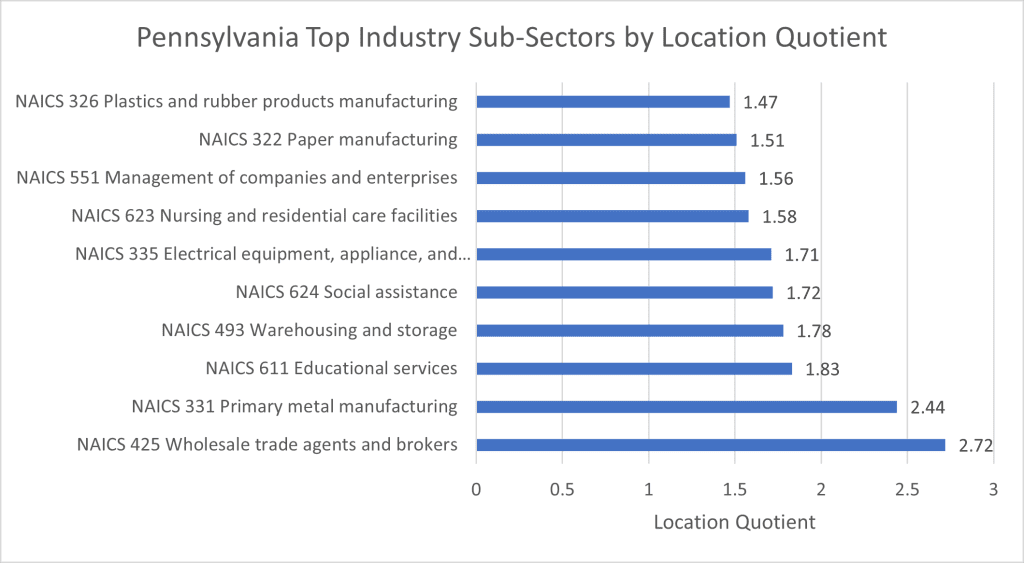The two urban centers of Pennsylvania ensure the state remains a hub for white-collar, advanced services and as well as manufacturing companies.
Industry clusters are regional concentrations of related industries.[i] Clusters consist of companies, suppliers, and service providers, as well as government agencies and other institutions that provide education, information, research, and technical support to a regional economy.[ii] Clusters are a network of economic relationships that create a competitive advantage for the related firms in a particular region, and this advantage then becomes an enticement for similar industries and suppliers to those industries to develop or relocate to a region.[iii] Clusters exist in all types of economies and are more prevalent in locations that achieve better performance relative to their overall stage of development.[iv] It is useful to view economies through the lens of clusters rather than specific types of companies, industries, or sectors because clusters capture the important linkages and potential spillovers of technology, skills, and information that cut across firms and industries.[v] Viewing a group of companies and institutions as a cluster highlights opportunities for coordination and mutual improvement.
A Location quotient is an indicator of the economic concentration of a certain industry in a state, region, county, or city compared to a base economy, such as a state or nation that measures industry clusters in a region. A location quotient greater than 1 indicates the concentration of that industry in the area. A location quotient greater than 1 typically indicates an industry that is export oriented. An industry with a location quotient of 1 with a high number of jobs present is likely a big exporter and is bringing economic value to the community feeding the retail trade and food services sectors.

As the table above illustrates, the Great Lakes states all have a higher-than-average number of manufacturing production jobs with Pennsylvania slightly above the national average putting the state overall behind global manufacturing leaders such as Indiana, Michigan, and Ohio.

The state of Pennsylvania continues to be a leader not just in manufacturing but also in education, advanced services, health care, and transportation and logistics as illustrated by the table above. The chart below dives a level deeper and illustrates Pennsylvania’s industry strengths in wholesale trade, metal manufacturing, education, and advanced services.

A review of Pittsburgh’s top occupations illustrates again the important role of energy, education, advanced services, arts, and healthcare play in this region as all these industries are above the national average with employees in the Pittsburgh region. Pittsburgh’s over 82,000 workers in the manufacturing sector do not constitute an above-average level of workers when this region is compared to other regions in the United States.

The Pittsburgh region’s largest occupations in raw numbers in industry sub-sectors, as represented by the chart below of its top industry employees, confirms a strong base in food services, advanced services, health care, and educational services.

The Western Pennsylvania market has transformed from a heavy industry dominated economy to a modern advanced services market.